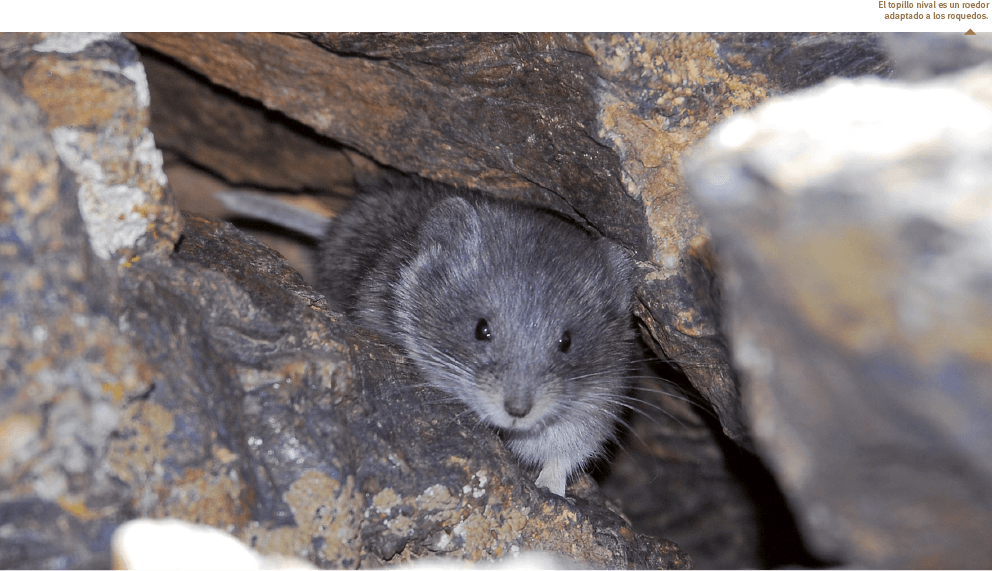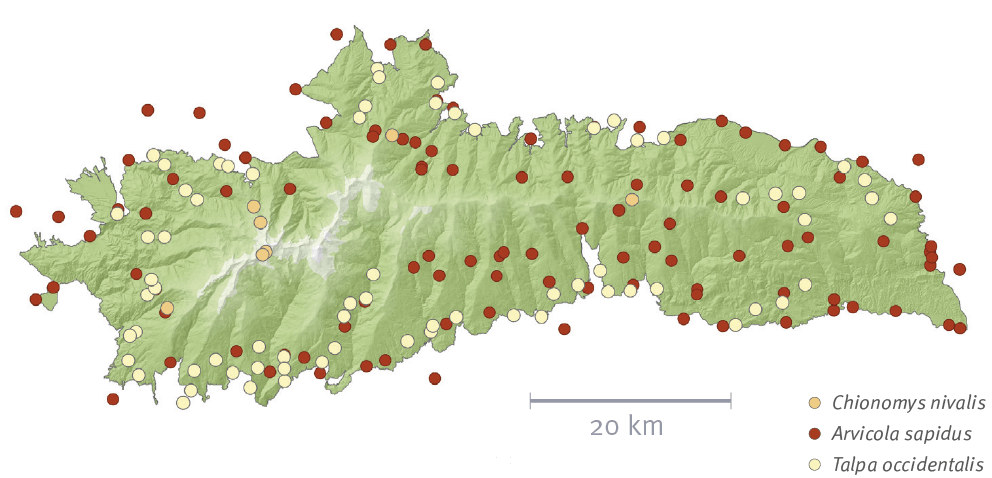Aims
The objective of this monitoring is to assess the population trends of certain micromammal species in Sierra Nevada.

Method and effort
The micromammal species included in the monitoring program are the European snow vole (Chionomys nivalis), the south-western water vole (Arvicola sapidus) and the Spanish mole (Talpa occidentalis). The three species have very different ecological requirements and thus the data derived from their monitoring reveal evolutionary aspects of the three welldifferentiated types of ecological systems. Below, the three methodologies used are described:
European snow vole (Chionomys nivalis): between June and August, the intensive monitoring is made in seven colonies. These colonies are found at different elevations and orientations. The study is made by live trapping with 30 folding Sherman traps © (8 x 9 x 23 cm).
South-western water vole (Arvicola sapidus): half-hour sampling sessions were conducted in each location likely to harbour this species. If the sampling proves positive, it is concluded and the time until locating this first indication is noted.
Spanish mole (Talpa occidentalis): given that the abundance of mole hills can be considered as an index of activity of this species, both the distribution as well as the abundance are inferred from these indirect indices in the field. A total of 18 transects 7.5 km long have been laid out with a total of four sampling stations per transect, roughly 2.5 m apart. In all, there are 72 stations or plots.

Periodicity
The same methodology is implemented once per year in the case of the snow vole (since 2008) and is repeated every two years in the case of the south-western water vole (since 2011) and the Spanish mole (2008 and 2010).
References
Funmilayo, O. 1977. Distribution and abundance of moles (Talpa europea L.) in relation to physical habitat and food supply. Oecologia, 30: 277-283.
Pérez-Aranda, D. 2009. Biología, ecología, genética y conservación del topillo nival (Chionomys nivalis) en Peñalara y en Sierra Nevada. Tesis doctoral. Universidad Complutense de Madrid. Madrid.
Román, J. 2010. Manual de campo para un sondeo de rata de agua (Arvicola sapidus). Manuales de mastozoología. Sociedad Española para el Estudio y Conservación de los Mamíferos. Málaga, 34 pp.
Wilson, D.E., Cole, R.F., Nichols, J.D. Rudran R. y Foster, M.S. (eds.) 1996. Measuring and Monitoring Biological Diversity, Standard Methods for Mammals. Smithsonian Institution Press, Washington DC. 409 pp.